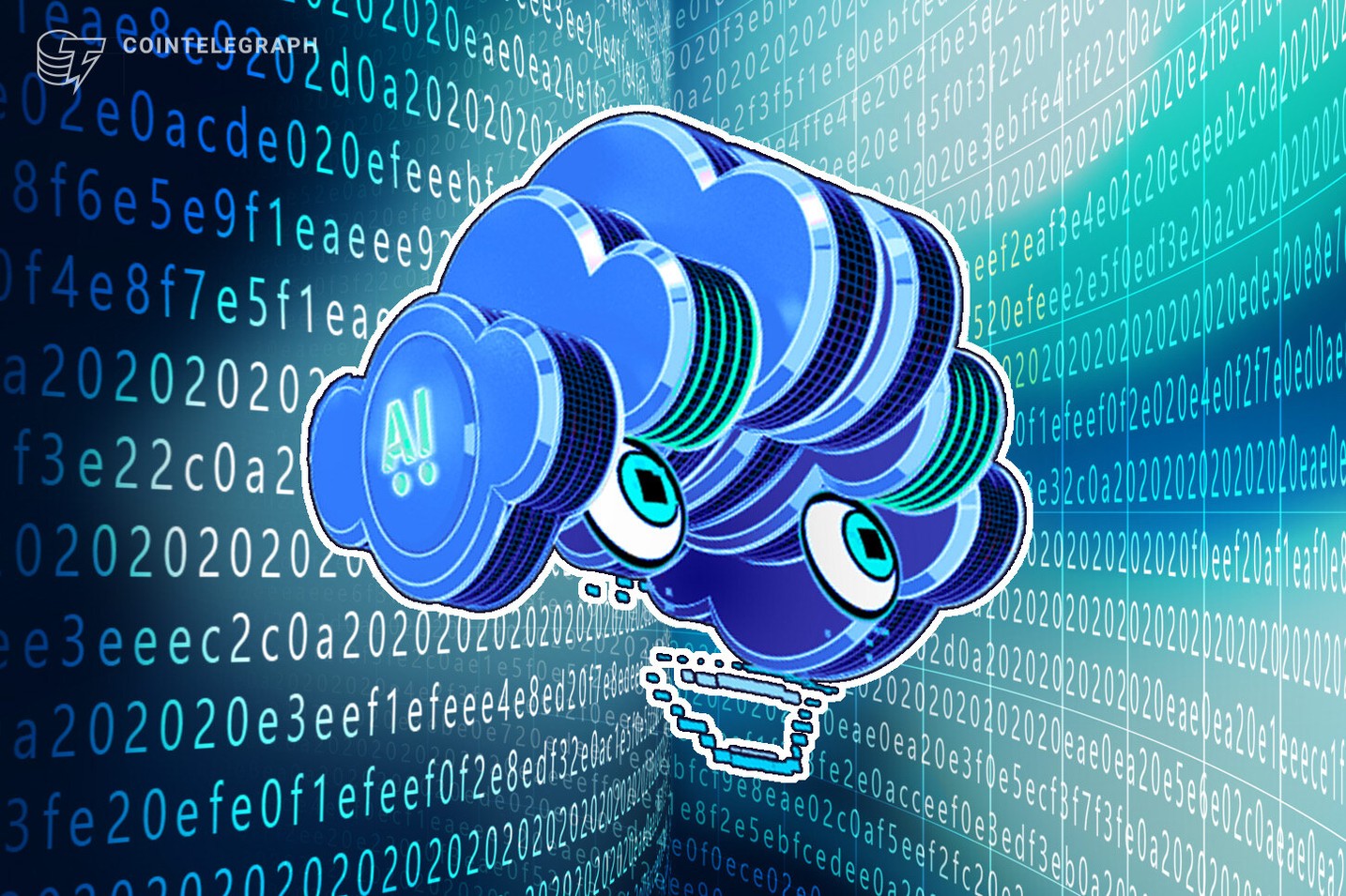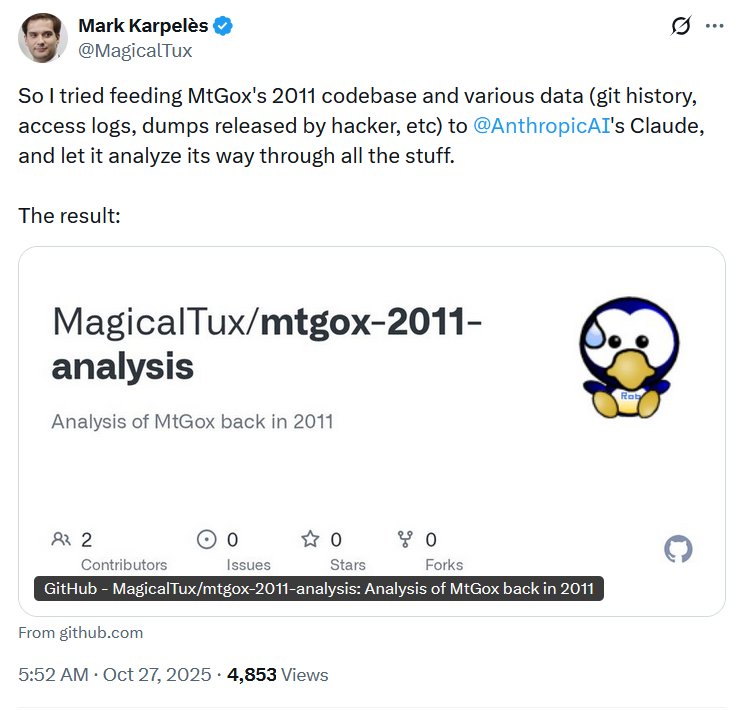
Exploring AI's Role in Detecting Flaws in Mt. Gox's Security
An AI evaluation reveals significant vulnerabilities in Mt. Gox's software that could have prevented its historic collapse.
Could AI have averted the collapse of Mt. Gox if it were around during that time? Former CEO Mark Karpelès invites speculation with a post-mortem powered by AI that reflects on the critical vulnerabilities within the exchange’s earlier codebase.
In a recent post, Karpelès mentioned he uploaded various data sources, including Mt. Gox’s 2011 codebase, to Claude AI by Anthropic. The analysis that ensued flagged several significant security vulnerabilities that ultimately contributed to the first major hack of the now-defunct exchange, deeming it “critically insecure.”
 AI Analysis
Source: Mark Karpelès on X
AI Analysis
Source: Mark Karpelès on X
The AI’s assessment suggested that the 2011 code of Mt. Gox, while sophisticated in its trading capabilities, harbored deep flaws. The evaluation highlighted that:
“The developer (Jed McCaleb) showcased strong engineering skills, yet the code had multiple vulnerabilities that were exploited in the June 2011 hack. Security adjustments made between Karpelès taking over and the attack offered only partial protection.”
Karpelès took charge of Mt. Gox in March 2011, shortly before a critical hack that resulted in the loss of 2,000 BTC. He noted that he was not privy to the original code before taking on the role, learning a lesson about the importance of due diligence.
AI’s Insights on Mt. Gox’s Vulnerabilities
According to Claude AI, the analysis of Mt. Gox’s software revealed several flaws, including unrecorded code issues, poor password practices, and administrators maintaining access post-transfer. The attack was exacerbated by a data breach involving Karpelès’ compromised WordPress and social media accounts.
“Contributing factors included: the insecure initial platform, undocumented WordPress setup, unwarranted admin access post-handover, and weak passwords for critical accounts,” stated the evaluation.
Alan’s review further mentioned that some security updates implemented before and after the hacks worked to reduce potential damage, including the introduction of a salted hashing algorithm for password security and better withdrawal protocols. It reiterated,
“This codebase, targeted in a sophisticated attack in June 2011, demonstrates both the original vulnerabilities’ severity and the partial success of the remediation efforts.”
While the AI remarked that improvements could have been made, the underlying issue posed by human error remained a significant risk that AI alone cannot remedy. Despite being non-existent for over a decade, the legacy of Mt. Gox keeps influencing the market, especially with ongoing Bitcoin repayments to creditors totaling around 34,689 BTC ahead of an impending October deadline.
Related: The ghost of Mt. Gox will stop haunting Bitcoin this Halloween.



